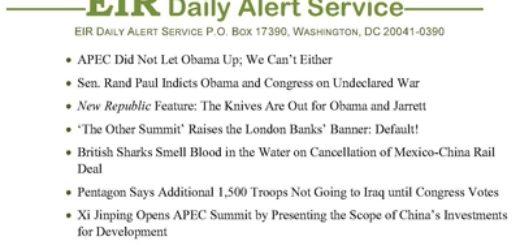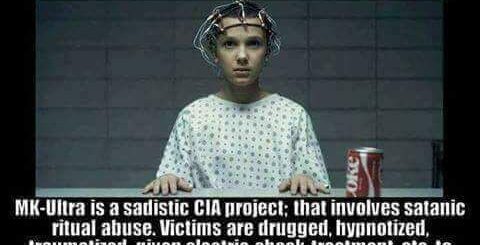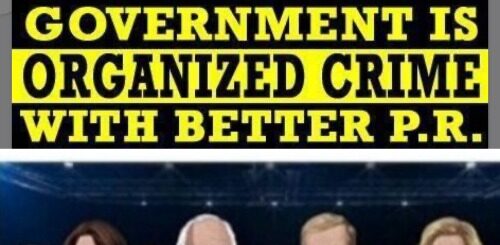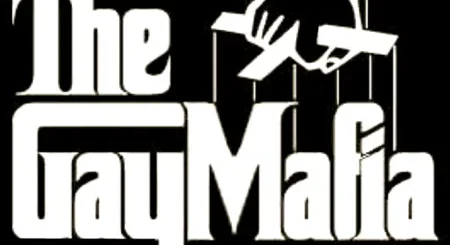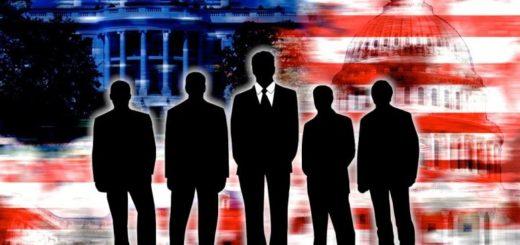EDITORIAL
With Which Germany, Can Europe Have a Future?
July 18 (EIRNS)—For the past two weeks we have put forward—as an indispensable action to be taken, now, in this economic and cultural crisis—Lyndon and Helga LaRouche’s proposal to save Deutsche Bank from looming bankruptcy, to avoid world war. Because Germany’s economy is the only one with the productive potential to save the wreck of Europe, by linking with China’s great New Silk Road project to develop Eurasia, the Middle East, Africa.
Otherwise there will be war with China, or with Russia. The Obama White House is steadily trying to provoke war confrontations with both Russia and China, and demanding Europe push those provocations, through NATO. If the terrorist splinters of Obama’s Mideast and Libya wars are bombing Europe into a state of shock, they have his sympathies, as long as they continue to join in military confrontations with Russia and China. Hillary Clinton is just as determined on this war policy.
There is no question, especially after Brexit, that Germany is Europe’s future. But if it is Angela Merkel’s and Wolfgang Schäuble’s Germany, adulterated with the even more warlike Green Party, there will be world war.
Thus the LaRouches proposed: It must be the Germany of Alfred Herrhausen, the assassinated head of the once-productive but now wretched and criminal giant, Deutsche Bank. Specifically, the Alfred Herrhausen who in 1989 was launching a development bank to lift up Poland and the Soviet Eastern Europe economically as the Soviet Union collapsed—and he was murdered.
Herrhausen’s plan then for Deutsche Bank and Germany, was a paradigm of what Germany can again be, as Europe’s future now.
The trans-Atlantic banking and financial system is falling apart. It is the victim of its own members, the City of London-centered European and Wall Street megabanks, which have crushed the real productive economies underneath them over decades of globalization. The trigger for the imminent crash is not simply Italian banks’ bad loans, or London property funds closing down, or the big German and Swiss banks in trouble, or even the ECB and Federal Reserve’s crazy policies; but the destruction of the productivity of the underlying economies over decades while the casino has boomed on top of them.
If the failing megabanks of Europe are to be recapitalized, they must be made to write off their casinos as total losses, and re-adopt the productive purposes epitomized by Herrhausen’s leadership of Deutsche Bank. Then, national credits can be generated, in the way China alone has done in this century, for the kind of projects which resuscitate the productivity of human beings and economies.
In the two weeks we have put forward this indispensable proposal by LaRouche, there have been important breaks in the United States. The “Saudi chapter” of the story of 9/11 has finally been forced out.
Glass-Steagall restoration has been put into the Presidential platforms of both Democrats and Republicans.
But the way to fight for Glass-Steagall reorganization of the banks, is with the “lever” of LaRouche’s proposal. Then this fight becomes one for a future for Europe and the United States as well.
STRATEGIC WAR DANGER
Germany Blocked Anakonda Exercise from Taking Place under NATO Flag
July 18 (EIRNS)—Last month’s Anakonda exercise in Poland was not officially a NATO exercise, despite the common reporting that it was. Officially it was jointly sponsored by the Polish Defense Ministry and U.S. Army Europe.
“And while officials from both countries were pushing headquarters in Brussels to declare the drill NATO-owned, Germany was the ringleader among a handful of mostly Western European nations withholding approval, according to sources,” Defense Newsreported in an analysis posted on July 17. “In the run-up to the exercise, ‘There were those voices in the alliance that were worried about that signature being too big,’ recalls now-retired NATO Supreme Allied Commander Gen. Philip Breedlove. ‘The political leadership of the alliance chose to keep them separate so as not to be too bellicose,’ he told Defense News.”
Recall that it was in the context of the entire series of near simultaneous military exercises, Anakonda being among the largest, that German Foreign Minister Frank-Walter Steinmeier made his comments about NATO saber-rattling and war-mongering against Russia.
Chinese Exercises in South China Sea Mark Escalation in Wake of Hague Ruling
July 18 (EIRNS)—Less than a week after the ruling of the Permanent Court of Arbitration against Chinese sovereignty in the South China Sea, the Chinese People’s Liberation Army is engaging in military activity in those same waters. Today the Chinese PLA Air Force confirmed that it has been flying H-6K bombers and other aircraft on patrols near Chinese islands and reefs in the South China Sea, reportsChina Daily, including over Huangyan Island (Scarborough Shoal), one of the most contentious areas in the South China Sea disputes.
“Based on the need of the Air Force for fulfilling its missions and tasks, the combat readiness patrol to the South China Sea by the Air Force servicemen will continue on regularized basis,” said Air Force spokesman Shen Jinke. At the same time, the maritime administration of Hainan Island announced today that a portion of the waters southeast of the island would be closed to maritime traffic through Thursday, though apparently providing no details about the exercises, reports AP.
All of this is occurring in the middle of a three-day visit to China by U.S. Chief of Naval Operations Adm. John Richardson, who is meeting with his Chinese counterpart, Adm. Wu Shengli, and is expected to visit the Chinese PLA Navy base at Qinqdao.
COLLAPSING WESTERN FINANCIAL SYSTEM
Campaign’s Effects: Frankfurter Allgemeine Zeitung Writes on Deutsche Bank/Herrhausen History
July 18 (EIRNS)—In the midst of the LaRouche campaign to save Deutsche Bank, close down its casino, and turn it back into Alfred Herrhausen’s bank, a very long article appeared July 18 in theFrankfurter Allgemeine Zeitung, “Deutsche Bank’s Last Chance,” a discussion of what has happened to the bank since Herrhausen’s assassination in 1989.
The article, by the FAZ’s financial markets editor Gerald Braunberger, does not discuss the European bank crisis, the world economy, or the threat of Deutsche Bank’s immediate insolvency, but has a different purpose: recapping the debate within and around the bank over the past 25 or more years, as to what it should be.
Herrhausen as Deutsche Bank’s chairman, reports Braunberger, referred to the “Anglo-Saxon financial culture” as “what we do not have” at his bank. Mixing that culture with German industrial bank culture since Herrhausen’s death has created great tension, he writes, and has had very bad results.
Immediately after Herrhausen’s death, Deutsche Bank under Chairman Hilmar Kopper still wanted to acquire a large share in the big Bavarian commercial lender, Bayerische Vereinsbank, anchoring it as a German industrial lending bank. The Bavarian government, instigated by Allianz Insurance which was moving in on Bayerische Vereinsbank, blocked that. Instead, during the 1990s Deutsche Bank acquired the Wall Street investment firm Bankers Trust—which launched it massively into manipulation of mortgage-backed securities and their casino derivatives—and the London investment firm Morgan Grenfell. By 2000 the investment bankers “were strong enough to stop a planned merger with Dresdner Bank,” and an acquisition of the postal savings institution Postbank.
“Deutsche Bank in the following years divested itself of its numerous industrial investments in its home country. Global investment banking achieved more and more dominance.”
Braunberger’s point is that the associated strategy of becoming “the world’s number-one investment bank”—publicly stated most often by Hermann Ackermann as chairman—failed miserably, and has now brought Deutsche Bank to an absolute nadir. “The public no longer judges the investment bankers as the heroes, but as the plunderers of a weakened, internally divided bank.”
And, Braunberger concludes, from 2005 through 2015, “splitting” Deutsche Bank by hiving off the investment bank divisions has been always debated within it, but always rejected by its CEOs. The current, British co-CEO, John Cryan, has doubled down and wants to concentrate entirely on the investment bank side of the bank, although it is the side which lost €5.8 billion in 2015.
Meanwhile the bank’s “economic strategists” energetically promote helicopter money as an economic recovery policy.
Italian Prime Minister Renzi May Be Going Ahead with Bank Bailout
July 18 (EIRNS)—Despite strong opposition from the European Commission bureaucracy and the German Finance Ministry—at least in public—it appears that Italian Prime Minister Matteo Renzi may be proceeding with his stated plan to bail many of Italy’s banks out of their bad debts.
Italy’s economy, with its strong role for industry and high-technology exports, has effectively been in constant recession and stagnation since the euro currency was introduced nearly 15 years ago, and that has worsened as the rest of Europe has sunk economically. Consequently Italian banks, which concentrate on commercial and household lending, hold a relatively very large volume of distressed and non-performing loans (reportedly a huge 18% of their assets), and a blowout of the banking system is looming as part of the threatened collapse of the entire London-centered European financial system.
The July 16 Britain’s Daily Telegraph reported, in “Italy on Collision Course with Brussels over €50 Billion Bad Bank Bailout Plan,” that Renzi’s government has engaged JPMorgan Chase bank, which has drawn up a plan for the bailout. “It is understood that €10 billion of public money could be used to buy bad loans at a knock-down price, taking assets with a face value of €50 billion off the banks’ hands, allowing them to start giving out more good loans instead.” The government “bad bank” would reportedly buy the loans at roughly 20 cents on the dollar and try to renegotiate them with the debtors. Some banks, thus taking a loss of about 80% of these loan assets, would need to be recapitalized with additional investments from the government’s €50 billion plan.
“The scheme, which is being put together by JP Morgan, could help clean up the banks, but also puts the country’s authorities on a collision course with the EU, which does not want taxpayers bailing out banks before private investors take a hit,” reports the Telegraph.
But not only would millions of Italians who have invested in bank bonds take that hit, but also major French and German banks—already in trouble—to the tune of tens of billions of euros.
When Renzi first proposed the plan, EIR Editor and American System economist Lyndon LaRouche recognized it as a necessary—but far from sufficient—step to allowing a European economic and productive recovery.
NEW WORLD ECONOMIC ORDER
China, Sri Lanka Forge Partnership in Developing Maritime Silk Road
July 18 (EIRNS)—During a three-day visit to Colombo, Sri Lanka, which ended July 10, Chinese Foreign Minister Wang Yi and his hosts—Prime Minister Ranil Wickremesinghe and Foreign Minister Mangala Samaraweera—discussed the importance of Sri Lanka’s support for China’s 21st Century Maritime Silk Road initiative.
Foreign Minister Samaraweera stressed that the Maritime Silk Road initiative “is in line with the government’s initiatives to make Sri Lanka the hub of Indian Ocean trade, a position it occupied in the ancient past,” Asia Times reported today. He added, “We discussed the 21st Century Maritime Silk Road for greater economic cooperation, which is viewed as a road of friendship, economic cooperation, socio- and cultural exchange, and connectivity.” Colombo also announced that it would resume a $1.5 billion Colombo Port City project with China that was suspended last year shortly after the new government took office.
The Port City and the Port of Hambantota projects, Wang Yi said in a July 9 press conference in Colombo, will “push forward the development of a harbor-oriented economy and Sri Lanka’s infrastructure construction, boosting its self-development capabilities.”
The Chinese Foreign Minister also emphasized that Sri Lanka was an “important pivot on the ancient Maritime Silk Road … it is fully capable of becoming an important cooperative partner in jointly building the ’21st Century Maritime Silk Road’ by giving play to its advantageous location to connect both the Asian and African continents, and reaching the South Asian subcontinent.”
Wang Yi pointed out that through joint construction of the Maritime Silk Road, “China is willing to help Sri Lanka realize its national development vision and become the future shipping, logistics, and even financial center in the Indian Ocean.” In this way, he said, “this pearl in the Indian Ocean can glow with new radiance in this era.”
Bolivia, Germany Deepen Collaboration on South America’s Bioceanic Railroad
July 18 (EIRNS)—Following a July 14 meeting in Berlin with Rainer Bomba, State Secretary of Germany’s Ministry of Transport and Infrastructure, Bolivia’s Planning Minister Rene Orellana announced that a German delegation led by Bomba will travel to Bolivia in October for further discussion on German participation in building South America’s bioceanic railroad, Sputnik reported today.
The 3,360 km railway, which would extend from the port of Santos in Brazil to the Peruvian port of Ilo on the Pacific, traversing 1,600 km of Bolivian territory, has an estimated budget of $10 billion. In Berlin, Orellana met with private sector businessmen as well as with government officials. Bomba, who visited Bolivia last January, reports there is intense interest from the German side in the proposed railroad, and has strongly advocated the route through Bolivia (as opposed to a northern route excluding Bolivia) as the most feasible, both financially and technologically.
U.S. POLITICAL AND ECONOMIC
Confirmed: Glass-Steagall in Republican Platform
July 18 (EIRNS)—A top Republican Party spokesman told reporters today that the Republican Party platform includes language advocating a return to a Glass-Steagall standard of banking regulation.
“We also call for a reintroduction of Glass-Steagall, which created barriers between what big banks can do,” said Paul Manafort, presumptive Republican presidential nominee Donald Trump’s campaign manager, at the press briefing today. His statement was reported in The Hill newspaper in Washington.
This puts the re-regulation of Wall Street at the center of the financial “planks” of both parties’ platforms. Not only is it an affirmation that Wall Street is still seen as “domestic enemy number one.” It points to the broad failure of the Obama plan, centered on the useless Dodd-Frank bill, and the broad, anti-Wall Street public support generated for the Glass-Steagall legislation since the last Presidential election in 2012.
It remains to be seen whether Trump will now use this as a cudgel with which to bash Hillary Clinton, who has steadfastly refused to endorse the proposed Glass-Steagall legislation.
Treasury and Justice Departments Took Cues from British To Sabotage Prosecution of HSBC, Dope Inc. Bank
July 18 (EIRNS)—In her July 15 column published in the New York Times, titled “A Bank Too Big To Jail,” financial columnist Gretchen Morgenson points to the recently released report by the Republican staff of the House Financial Services Committee documenting the role of the Treasury and Justice Departments in sabotaging prosecution of the world’s largest drug bank, HSBC (formerly Hongkong and Shanghai Banking Corp.), for laundering $900 million in drug money. HSBC got off with a Deferred Prosecution Agreement (DPA)—a slap on the wrist—which guaranteed that its top officers and executives would not be prosecuted for any financial crime.
Most importantly, Morgenson zeroes in on Treasury’s and Justice’s subservience to the British, in citing remarks by Mary Kreiner Ramirez, a professor at the Washburn University School of Law in Topeka, Kansas, and a former Assistant U.S. Attorney. She reported she was “startled” by how much influence officials at Britain’s Financial Services Authority (FSA) “had on the Justice Department’s process in the HSBC matter, according to the report.” It would appear, Ramirez said in an interview with Morgenson, “that in making the decision with respect to HSBC, [then-U.S. Attorney General Eric] Holder gave more attention to the concerns expressed by the FSA than he did with respect to our own agencies.” She added, “And think about it: Congress spent three years trying to uncover this information that FSA was getting at the time the events were unfolding.”
The House Financial Services Committee reported that Treasury “improperly impeded the committee’s investigation” for almost three years before producing certain subpoenaed records. Moreover, Treasury’s production of records “is missing dozens, if not hundreds, of pages.” According to Edward J. Kane, a professor at Boston College, the House Financial Services Committee report should be “viewed as evidence of an abuse of the regulatory system. And, unless proven otherwise, this is just the tip of the iceberg.”
SCIENCE & INFRASTRUCTURE
South Africa’s Radio Telescope Array Discovers More than 1,300 New Galaxies
July 18 (EIRNS)—Yesterday South African Minister of Science and Technology Naledi Pandor proudly released the “First Light” image of the sky, taken by the 16 operating radio telescopes in the country’s MeerKAT array. Looking out from Earth’s Southern Hemisphere, the array revealed more than 1,300 distant galaxies; 70 were known from this location previously.
“South Africa has already demonstrated its excellent science and engineering skills by designing and building MeerKAT,” said Minister Pandor. “Government is proud of our scientists and engineers for pioneering a radio telescope that will lead to groundbreaking research.” About 75% of the value of the telescopes used local sources, and South Africa’s team of more than 200 young scientists, engineers, and technicians helped develop the groundbreaking technology for the project.
When completed, the MeerKAT array will consist of 64 radio receivers, scheduled to be operational by the end of 2017. Later they will be integrated into the multinational Square Kilometer Array (SKA), most of which is being built in South Africa, with participation of other African nations.
“Based on the results being shown today,” said SKA South Africa Chief Technologist Justin Jonas, “we are confident that after all 64 dishes are in place, MeerKAT will be the world’s leading telescope of its kind until the advent of SKA.”


